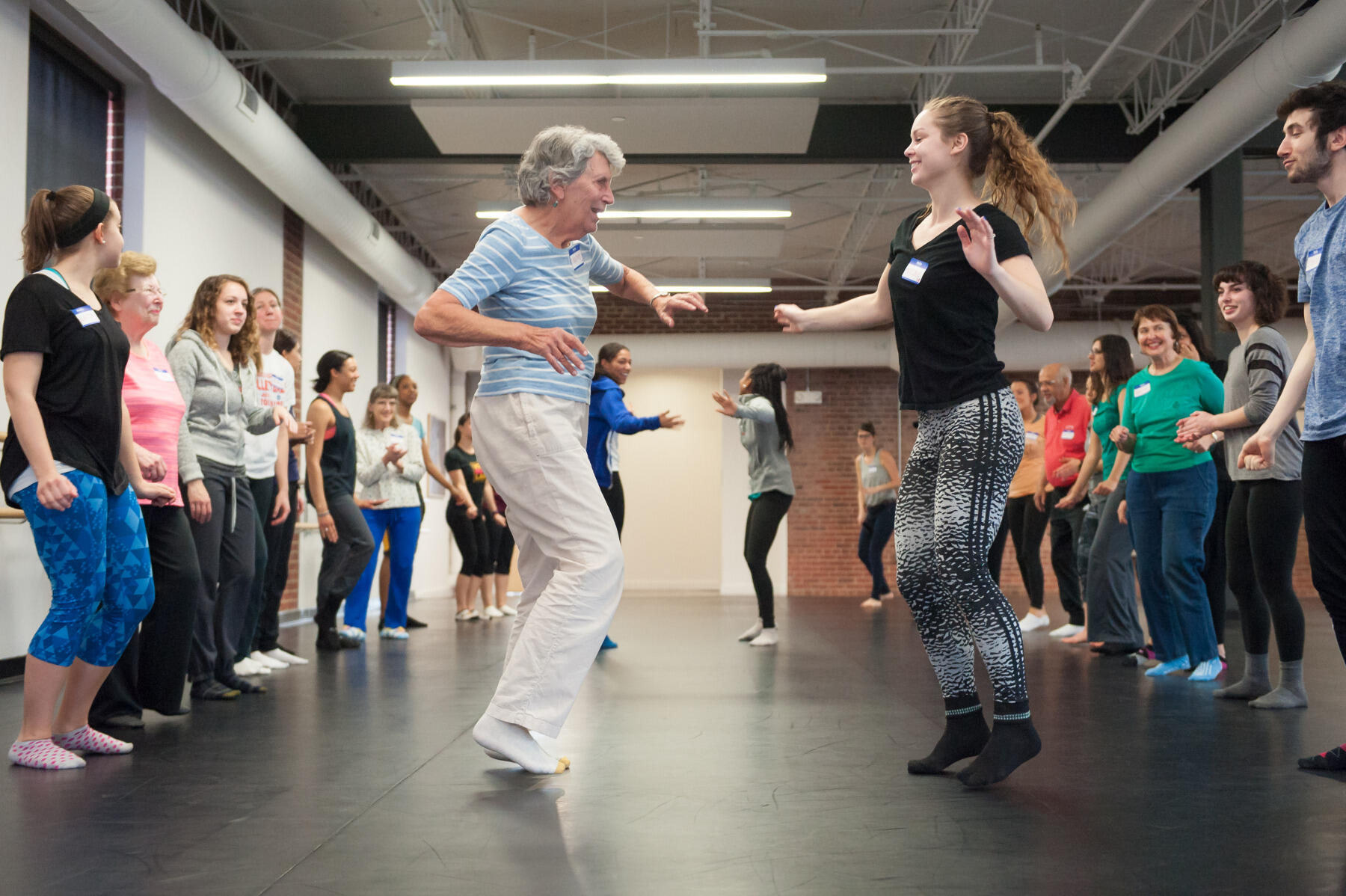
March 21, 2016
Aging gracefully: PALETTE, an intergenerational arts program, pairs VCU students with senior adults to overcome ageism through art
Share this story
Music — heavy with drums — booms through the speakers and reverberates off the walls of the spacious dance studio in the Virginia Commonwealth University Depot Annex building on a Sunday afternoon in early February. Inside, 20 VCU students and 10 senior adults are mirroring one another’s motions as they dance to the beat.
“Picture yourself flinging water off the ends of your limbs,” Melanie Richards shouts above the music to the group that ranges in age from 20 to 88 years old. The associate professor in the VCU School of the Arts Department of Dance and Choreography demonstrates by raising her arms above her head and flicking her wrists. The class does the same, with each participant adding their own flair to the movement.
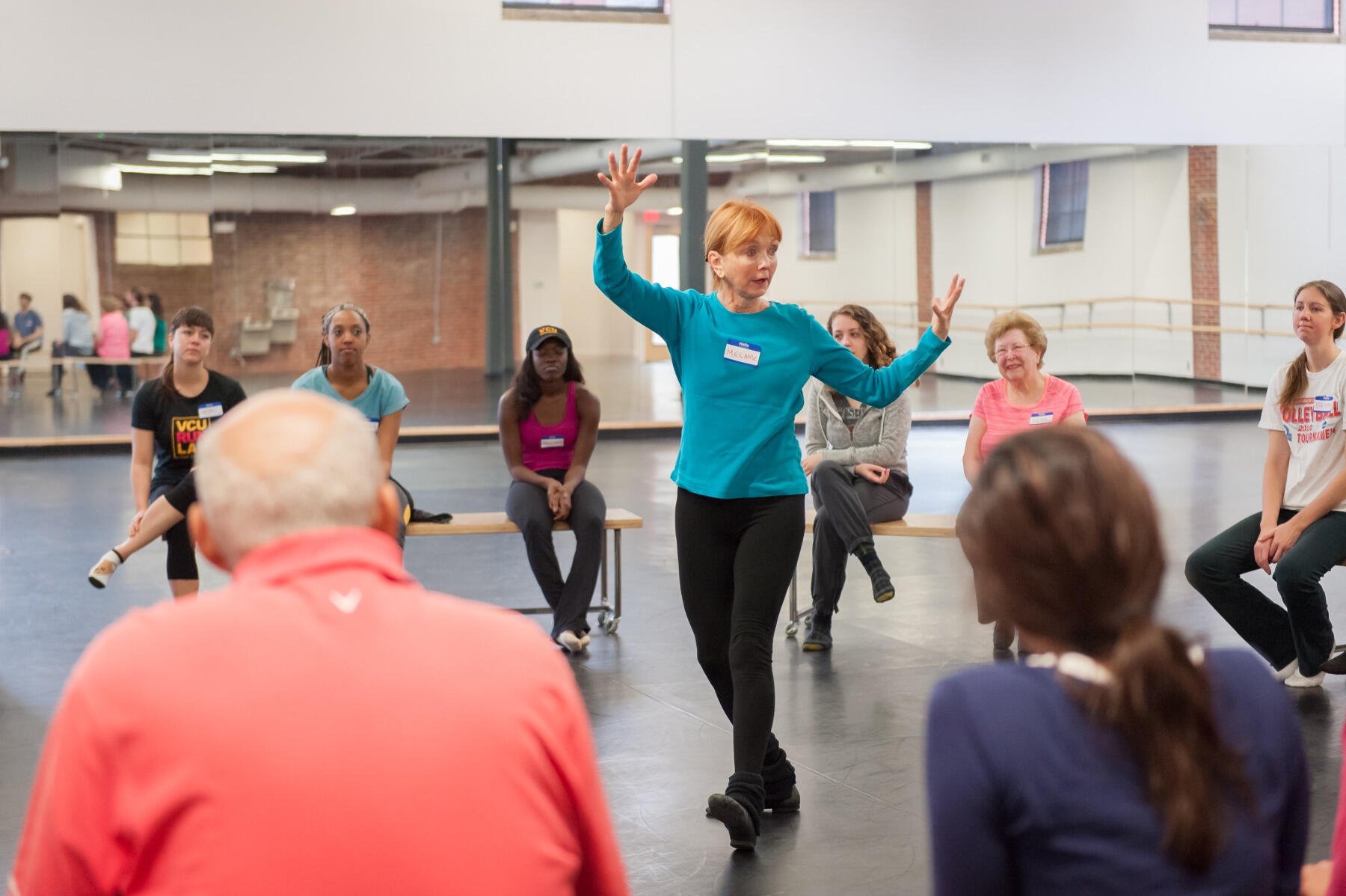
The dancers are participants in PALETTE, an intergenerational arts program that partners VCU students with senior adults in the community to collaborate on creative projects. The PALETTE program launched in January 2014 with visual arts programming and expanded to the dance component, PALETTE in Motion, in August 2015. It is offered to dance majors and to interdisciplinary health profession students who will be working with older adults when they start their careers.
“More often than not, the health care students will be seeing sick, frail older adults in their professions,” program founder and director Sadie Rubin said.
By exposing students to older adults who are healthy and active in the community and by structuring the programming around the collaborative creation of art, PALETTE provides a forum for health profession students and older adults to build meaningful relationships outside of the usual medical model. As the PALETTE in Motion participants learn together about how to use space, time and motion as artistic expression, they transcend generational divides and overcome prejudices such as ageism and gerontophobia.
“There is something that both age groups can learn from each other,” senior participant Barbara Rubin (no relation to program director Sadie Rubin) said. The retired school principal joined the class after seeing an advertisement for it in the Richmond Times-Dispatch.
Barbara Rubin, who is 83 years old, has used a walker to get around since breaking her knee twice in one month a little more than a year ago. She enters the dance studio every week with the assistance of the walker, but during class she sets it aside and moves joyfully with the three students in her small group.
“The physical therapy students’ patients are going to be senior citizens,” Barbara Rubin said. “They are the ones who fall and break bones, so this class is a nice exchange for both the seniors and the students. We all have a lot to learn and putting us together is an education.”
Stronger together
When she moved to Richmond from Washington, D.C., in 2013, Sadie Rubin had an idea of the type of intergenerational arts program that she wanted to start here, but she wasn’t sure how she would turn her dream into a reality.
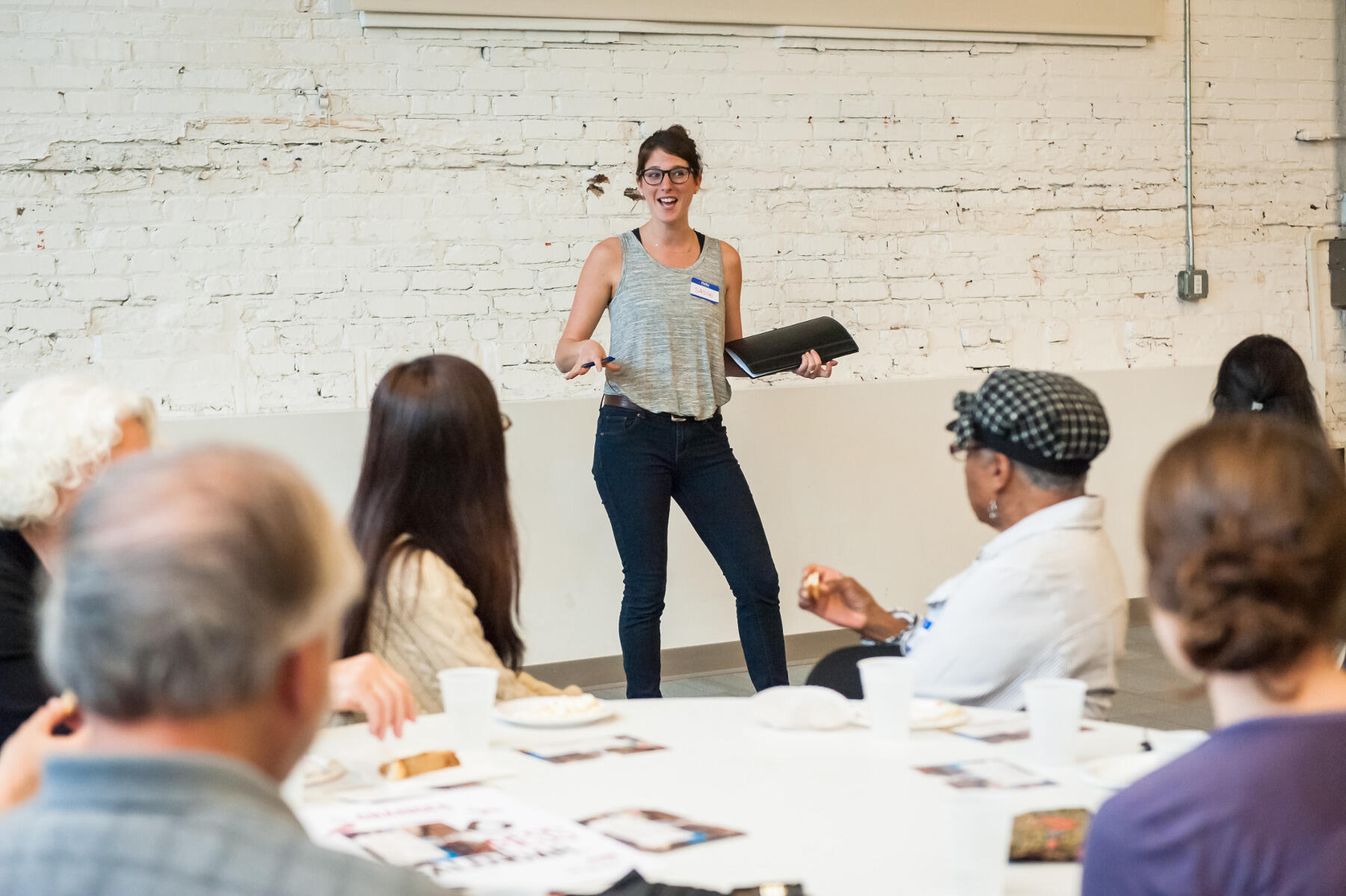
The 29-year-old graduated from Columbia University with a master’s degree in social work and a concentration in aging in 2011. While she was in graduate school, she heard about a pilot program that connected medical students with older adults through creative arts. Sadie hoped to start a similar program in Richmond, but instead of partnering with medical students, she wanted to work with students who were studying pharmacy, social work, dentistry and physical therapy, which are all professions that treat a growing population of aging adults.
Prejudices such as ageism and gerontophobia have been shown to reduce effective care delivery and impact long-term health outcomes for older adults.
“There is evidence to support the fact that negative attitudes toward older adults and aging contributes to negative health outcomes in senior patients,” Sadie Rubin said, adding that the negative health outcomes include high blood pressure, diabetes and heart disease. By combining intergenerational creative arts activities with formal education on aging, ageism and gerontophobia, PALETTE was designed to improve patient-centered care while educating future generations of older adults about positive, optimal aging.
“If health professionals have negative attitudes toward aging in general then they will provide poorer care toward older adults,” Sadie Rubin said. “That is one of the reasons why we think it is important to have a program like this. We want our health professionals to have more positive attitudes toward older adults so that they can be providing better care.”
We want our health professionals to have more positive attitudes toward older adults so that they can be providing better care.
When she was starting out, Sadie Rubin arranged a few meetings at various departments at VCU and eventually ended up at the School of Allied Health Professions. It was there that she met Tracey Gendron, Ph.D., assistant professor and director of community engagement and research in the Department of Gerontology. Gendron and Sadie Rubin worked together to develop a formal plan for the program, which included partnering with senior programs in the community at the Weinstein Jewish Community Center, Senior Connections and the Greater Richmond Age Wave.
“There is no way that this would have been possible without VCU,” Sadie Rubin said of the program, which is entirely funded by grants. The Geriatric Training and Education Initiative grant administered by the VCU Virginia Center on Aging has funded PALETTE since its founding, and a grant from the VCU Council for Community Engagement allowed them to add the dance class last year. “The CCE grant helped us pave the way for PALETTE in Motion,” Sadie Rubin said.
PALETTE, which stands for promoting art for life enrichment through transgenerational engagement, is a free-standing entity in the community, but the interdisciplinary program includes students and faculty from the VCU Schools of Allied Health Professions, Dentistry, Pharmacy and Social Work and the Department of Dance and Choreography in the School of the Arts.
“One of the things I love most about working at VCU is that we are one of the most openly collaborative universities I have ever experienced,” Gendron said. “People rally around a good idea.”
<slideshow id=129 align=center width=620>
Measuring success
VCU has hosted five PALETTE classes since January 2014. The one-credit classes meet five times for creative arts on weekends and culminate with a showcase event or exhibit. At the beginning of the semester, Sadie Rubin leads a two-hour orientation seminar with the VCU students who will be participating, in which she reviews information about ageism and stereotypes about aging.
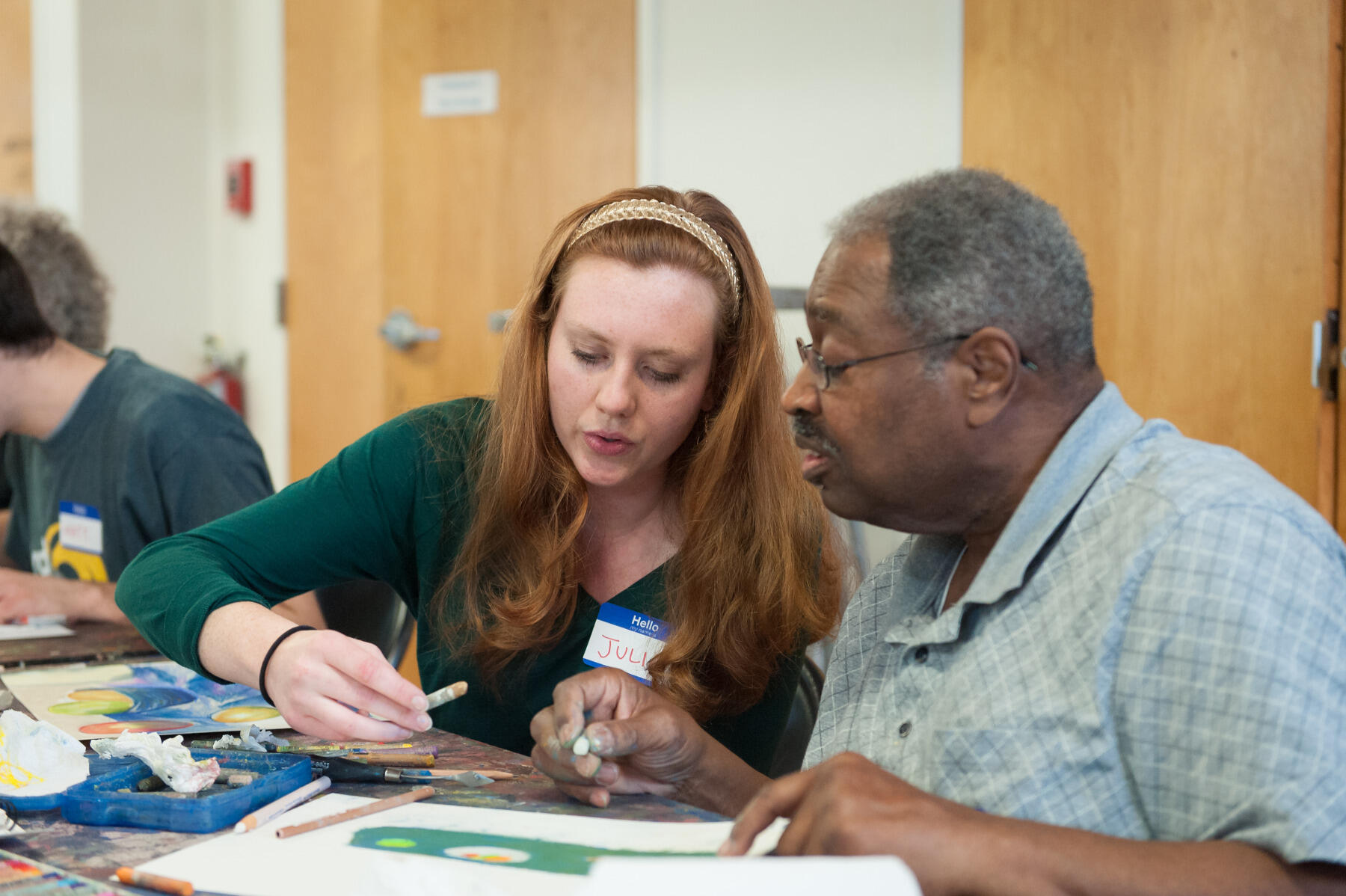
“We joke that we are condensing two years of a master’s degree in gerontology into one class,” Sadie Rubin said. “We provide information about identifying ageism, understanding societal attitudes toward aging, the institutional perpetuation of ageism and stereotypes.”
Students in the visual arts class meet at the Visual Arts Center of Richmond, where instructors from the center conduct workshops in painting, printmaking, drawing and sculpture. Students and older adults in that class are paired to work on their individual projects side by side. In the dance class, two to three students are partnered with one senior adult to explore concepts such as expanding and contracting, mirroring movements and moving to a rhythm.
“I take the same elements that I teach to my dance students and share them with non-dance populations,” Richards said. “We are covering challenging ideas of working with the body as an expressive tool and learning how you can communicate and then, through that communication, make an artistic statement.”
With the students and older adults approaching the same task of artistic expression, they are able to see each other as peers. Over the course of the class, art serves as an icebreaker and a point of commonality for sharing perspectives and life experiences. “The students who are not dance majors were just as apprehensive and insecure about dancing at first as the old people,” 80-year-old Dorothy Schoeneman said. “It gave us common ground.”
It is about whether you are willing to let loose and push yourself to your limits. It is about your attitude.
In August, Gendron and Sadie Rubin co-authored an article with their colleagues titled “Challenging Gerontophobia and Ageism Through a Collaborative Intergenerational Art Program,” which was published in the Journal of Intergenerational Relationships. The article focused on the attitudes of the VCU students toward older adults at the beginning of the program and their changes in attitude as a result of participation in PALETTE. They used quantitative data from the surveys and qualitative data from the students’ reflection papers to support the article.
“We are looking at hard data on what is happening here,” Sadie Rubin said, adding that after participating in PALETTE, students demonstrated measurably positive change in their attitudes toward older adults.
Having established success in changing students’ attitudes, PALETTE now serves as a model for programs that other universities could adopt to combat culturally ingrained prejudices such as ageism and gerontophobia.
“Ageism is definitely something that I have done in the past,” second-year pharmacy student and PALETTE in Motion participant Gia Dulai said. “It has been interesting to see that age doesn’t play a part in this at all. It is about whether you are willing to let loose and push yourself to your limits. It is about your attitude.”
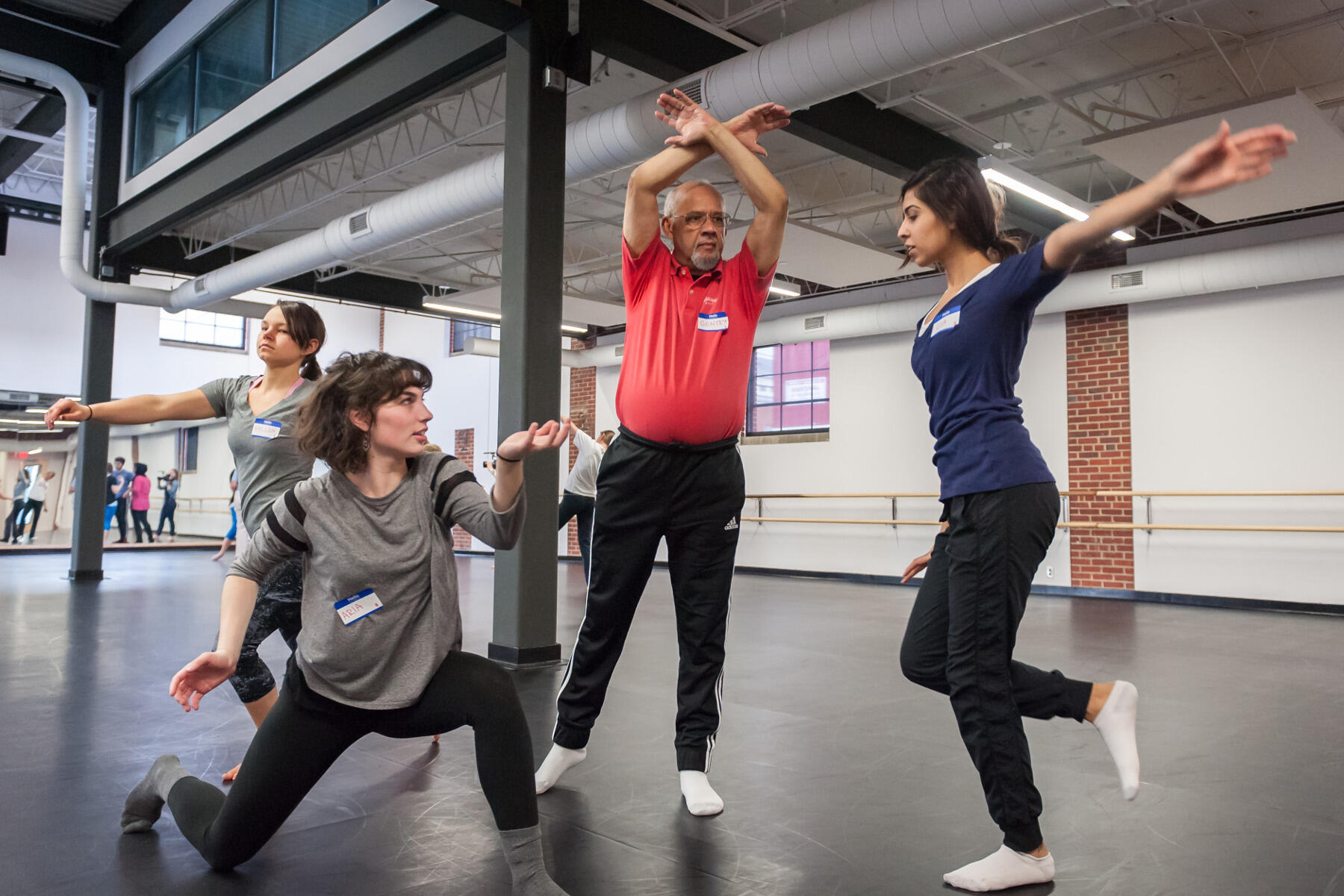
Empowerment for all
Nervous jitters and chatter fill the dance studio on a Sunday afternoon in late February, where PALETTE in Motion participants are waiting for guests to arrive for their final showcase event. The class has met every weekend for the past month and, in addition to learning together about dance, they have learned a lot about one another.
“The older adults are not defined by their age and we are not defined by being pharmacy students,” first-year pharmacy student Devki Gajera said. “Being here gives us the opportunity to just be people and interact outside of what we spend our daily lives doing.”
Barbara Rubin’s small group includes first-year physical therapy student Mimi Garcia-Otero, second-year pharmacy student Precious Dadzie and senior dance major Bailey Randolph. The four dancers have coordinated their outfits for the day, wearing matching red tops and black pants. Before the guests start to trickle in, the group huddles for a selfie.
For its final performance, the group has choreographed a dance based on the concept of time. The four dancers perform a wave-type motion, with everyone in the group standing in a line and passing motion from one person to another. Barbara keeps her walker close by, but moves seamlessly in harmony with the group.
“You have this mindset that as you get older you can’t do certain things and then you come here and you see people moving totally fine,” Garcia-Otero said. “It is important and empowering for us to believe that of our patients so that they can believe it of themselves.”
To learn more, visit paletteprogram.org or contact Sadie Rubin at srubin@paletteprogram.org.
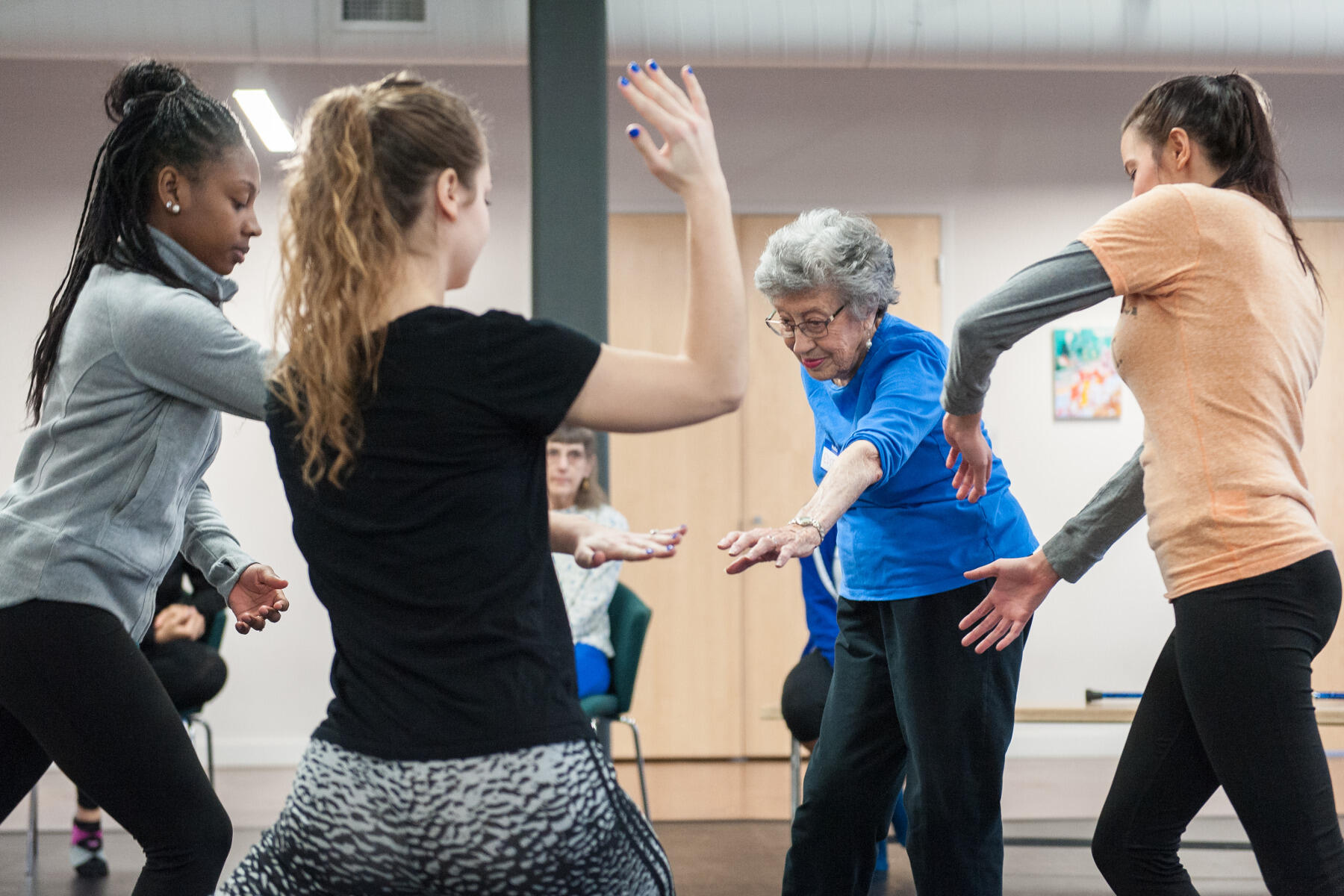
Subscribe for free to the weekly VCU News email newsletter at http://newsletter.news.vcu.edu/ and receive a selection of stories, videos, photos, news clips and event listings in your inbox every Thursday.
Subscribe to VCU News
Subscribe to VCU News at newsletter.vcu.edu and receive a selection of stories, videos, photos, news clips and event listings in your inbox.






